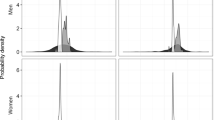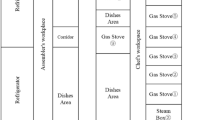Abstract
Continuous laser particle counters collocated with time-integrated filter samplers were used to measure personal, indoor, and outdoor particulate matter (PM) concentrations for a variety of prescribed human activities during a 5-day experimental period in a home in Redwood City, CA, USA. The mean daytime personal exposures to PM2.5 and PM5 during prescribed activities were 6 and 17 times, respectively, as high as the pre-activity indoor background concentration. Activities that resulted in the highest exposures of PM2.5, PM5, and PM10 were those that disturbed dust reservoirs on furniture and textiles, such as dry dusting, folding clothes and blankets, and making a bed. The vigor of activity and type of flooring were also important factors for dust resuspension. Personal exposures to PM2.5 and PM5 were 1.4 and 1.6 times, respectively, as high as the indoor concentration as measured by a stationary monitor. The ratio of personal exposure to the indoor concentration was a function of both particle size and the distance of the human activity from the stationary indoor monitor. The results demonstrate that a wide variety of indoor human resuspension activities increase human exposure to PM and contribute to the “personal cloud” effect.
This is a preview of subscription content, access via your institution
Access options
Subscribe to this journal
Receive 6 print issues and online access
$259.00 per year
only $43.17 per issue
Buy this article
- Purchase on Springer Link
- Instant access to full article PDF
Prices may be subject to local taxes which are calculated during checkout




Similar content being viewed by others
References
Brauer M., Hirtle R.D., Hall A.C., and Yip T.R. Monitoring personal fine particle exposure with a particle counter. J Expos Anal Environ Epidemiol 1999: 9: 228–236.
Delfino R.J., Zeiger R.S., Seitzer J.M., and Street D.H. Symptoms in pediatric asthmatics and air pollution: Differences in effects by symptom severity, anti-inflammatory medication use and particulate averaging time. Environ Health Perspect 1998: 106: 751–761.
Dockery D.W., and Spengler J.D. Personal exposure to respirable particulates and sulfates. J Air Pollut Control Assoc 1981: 31: 153–159.
Ferro A.R., Hildemann L.M., McBride S.J., Ott W., and Switzer P. Human exposure to particles due to indoor cleaning activities. In: C.A. Brebbia et al. (Eds.), Air Pollution VII. WIT Press: Southampton, UK, 1999: pp. 487–496.
Ferro A.R., Kopperud R.J., and Hildemann L.M. Source strengths for indoor human activities that resuspend particles. Environ Sci Technol 2004: in press.
Gold D.R., Litonjua A., Schwartz J., Lovett E., Larson A., Nearing B., Allen G., Verrier M., Cherry R., and Verrier R. Ambient pollution and heart rate variability. Circulation 2000: 101: 1267–1273.
Janssen N.A.H., Hoek G., Harssema H., and Brunekreef B. Childhood exposure to PM10: Relation between personal, classroom and outdoor concentrations. Occup Environ Med 1997: 54: 888–894.
Janssen N.A.H., Hoek G., Brunekreef B., Harssema H., Mensink I., and Zuidhof A. Personal sampling of PM10 among adults: relation between personal, indoor and outdoor concentrations. Am J Epidemiol 1998: 147: 537–547.
Janssen N.A.H., Hoek G., Harssema H., and Brunekreef B. Personal exposure to fine particles in children correlates closely with ambient fine particles. Arch Environ Health 1999: 54: 95–101.
Janssen N.A.H., Hartog J.J., Hoek G., Brunekreef B., Lanki T., Timonen K.L., and Pekkanen J. Personal exposure to fine particulate matter in elderly subjects: relation between personal, indoor, and outdoor concentrations. Air Waste 2000: 50: 1133–1143.
John W., and Reischl G. A cyclone for size-selective sampling of air. J Air Pollut Control Assoc 1980: 30: 872–876.
Lioy P.J., Waldman J.M., Buckley T., Butler J., and Pietarinen C. The personal, indoor and outdoor concentrations of PM-10 measured in an industrial community during the winter. Atmos Environ 1990: 24B: 57–66.
Long C.M., Suh H.H., and Koutrakis P. Characterization of indoor particle sources using continuous mass and size monitors. Air Waste 2000: 50: 1236–1250.
McBride S.J., Ferro A., Ott W., Switzer P., and Hildemann L.M. Investigations of the proximity effect for pollutants in the indoor environment. J Expos Anal Environ Epidemiol 1999: 9: 602–621.
Morgan G., Corbett S., and Wlodarczyk J. Air pollution and hospital admissions in Sydney, Australia, 1990 to 1994. Am J Public Health 1998: 88: 1761–1766.
Özkaynak H., Xue J., Weker R., Butler D., Koutrakis K., and Spengler J. The Particle Team (PTEAM) study: Analysis of the data. EPA Project Summary, EPA/600/SR-95/098, U.S. EPA: Research Triangle Park, NC, 1996.
Peters A., Dockery D.W., Muller J.E., and Mittleman M.A. Increased particulate air pollution and the triggering of myocardial infarction. Circulation 2001: 103: 2810–2815.
Roberts J.W., and Dickey P. Exposure of children to pollutants in house dust and indoor air. Rev Environ Contam Toxicol 1995: 143: 59–78.
Rodes C.E., Kamens R.M., and Wiener R.W. The significance and characteristics of the personal activity cloud on exposure assessment measurements for indoor contaminants. Indoor Air 1991: 2: 123–145.
Robinson J.P., Thomas J., and Behar J.V. Time spent in activities, locations, and microenvironments: A California-national comparison. EPA Report EPA/600/4-91/006, U.S. EPA: Las Vegas, NV, 1991.
Samet J.M., Dominici F., Curriero F.C., Coursac I., and Zerger S.L. Fine particulate air pollution and mortality in 20 U.S. Cities, 1987–1994. N Engl J Med 2000: 343(24): 1742–1749.
Smith K.R. Fuel combustion, air pollution exposure, and health: the situation in developing countries. Annu Rev Energy Environ 1993: 18: 529–566.
Thatcher T.L., and Layton D.W. Deposition, resuspension, and penetration of particles within a residence. Atmos Environ 1995: 29(13): 1487–1497.
Vedal S. Ambient particles and health: Lines that divide. Air Waste 1997: 47: 551–581.
Wallace L. Indoor particles: A review. Air Waste 1996: 46: 98–126.
Whitby K.T., and Willeke K. Single particle optical counters: principles and field use. In: Lundgren D.A. (Ed.), Aerosol Measurement. University Presses of Florida: Gainesville, FL, 1979.
Acknowledgements
This work was supported in part by funding from the Center for Indoor Air Research and the Stanford University Shah Family Fellowship. The authors are grateful for the assistance of Wayne Ott and Victor W.C. Chang.
Author information
Authors and Affiliations
Corresponding author
Rights and permissions
About this article
Cite this article
Ferro, A., Kopperud, R. & Hildemann, L. Elevated personal exposure to particulate matter from human activities in a residence. J Expo Sci Environ Epidemiol 14 (Suppl 1), S34–S40 (2004). https://doi.org/10.1038/sj.jea.7500356
Published:
Issue Date:
DOI: https://doi.org/10.1038/sj.jea.7500356
Keywords
This article is cited by
-
Proxy methods for detection of inhalation exposure in simulated office environments
Journal of Exposure Science & Environmental Epidemiology (2023)
-
Interrelationship of Indoor Particulate Matter and Respiratory Dust Depositions of Women in the Residence of Dhanbad City, India
Environmental Science and Pollution Research (2022)
-
Predicting indoor PM2.5/PM10 concentrations using simplified neural network models
Journal of Mechanical Science and Technology (2021)
-
Pyrethroid levels in toddlers’ breathing zone following a simulated indoor pesticide spray
Journal of Exposure Science & Environmental Epidemiology (2019)
-
An evaluation of the impact of flooring types on exposures to fine and coarse particles within the residential micro-environment using CONTAM
Journal of Exposure Science & Environmental Epidemiology (2016)



